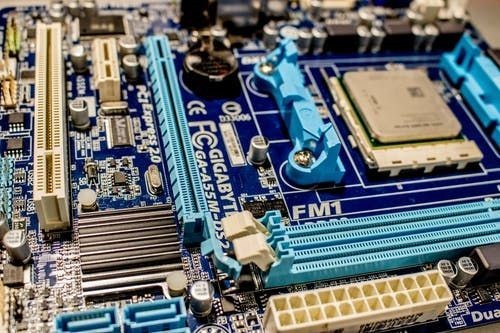
KUALA LUMPUR: The electrical and electronics (E&E) industry is targeted to contribute RM120 billion to gross domestic products (GDP) and generate RM495 billion in export earnings by 2025.
Under the 12th Malaysia Plan (12MP), the E&E industry players will be encouraged to adopt advanced technologies and produce more sophisticated products, resulting in higher productivity and growth.
According to the 12MP Document released by the Economic Planning Unit (EPU) today, the E&E industry needs to be repositioned by boosting investments in high-value activities such as design and development (D&D) and front-end manufacturing.
"In this regards, efforts will be focused on strengthening manufacturing ecosystems, promoting new technology adoption, uplifting the development of talent, as well as enhancing research and development (R&D) and D&D activities,” it said.
To strengthen the E&E industry ecosystem for higher value chain, the EPU said a comprehensive ecosystem based on a more sytematic approach is important to ensure the sustainable development of the industry.
In this regard, it said a national E&E roadmap will be formulated to provide strategic direction for the industry, with key subsectors comprising, among others, semiconductors, solar photovoltaic, light-emitting devices, electronics manufacturing devices, and manufacturing-related services.
"The roles of relevant organisations will be enhanced to better coordinate and create strong linkages and collaboration with research institutions, as well as between public and private sectors. Incentives for the E&E industry will be restructured to be more impactful. The implementation of these initiatives will enable the streamlining of government funding, technical support and facilities,” it said.
According to the EPU, efforts will also be undertaken to move the E&E industry towards higher-value activities across the supply chain with greater automation and advanced technology utilisation.
Meanwhile, it said multinational companies (MNCs) will be encouraged to facilitate the enhancement of local micro, small and medium enterprise (MSME) capabilities, of which, the implementation of the Lighthouse Project, introduced in 2020, will be intensified to encourage MNCs to assist MSMEs in embracing digitalisation and Globalisation 4.0.
In uplifting the development of talent and capability for the industry, the EPU said various micro credential programmes will be expanded based on the Triple Helix model, where additional skills sets, including siftware coding and data analytics modelling, will be provided by various training institutions to meet market demand.
It said several initiatives will be implemented to develop talent in the industry in line with the National Fourth Industrial Revolution (4IR) Policy, including creating an industry-led 4IR skills development centres, incentivising industry to reskill and upskill employees in 4IR, and establishing an artificial intelligence-enabled data platform to facilitate manpower planning.
"To accelerate the development of the high-end manufacturing inddustry, employees will be upskilled and reskilled in the field of designing. A dedicated cente will be identified to train highly-skilled design engineers to meet industry demand,” it said.
In 2020, the EPU said the E&E industry contributed 64 per cent to the GDP valued at RM86.1 billion, while from 2016 to 2020, the industry grew 5.6 per cent per annum, slightly higher than the manufacturing sector growth of 3.3 per cent per annum.
"In addition, the E&E subsector dominated the country’s exports with total exports share accounting for 45.6 per cent or RM386.1 billion in 2020. A total of 577 E&E projects with investments of RM71.4 billion were approved between 2016 and 2020,” it added.
Source: https://www.thestar.com.my/business/business-news/2021/09/27/ee-to-contribute-rm120b-to-gdp-by-2025

